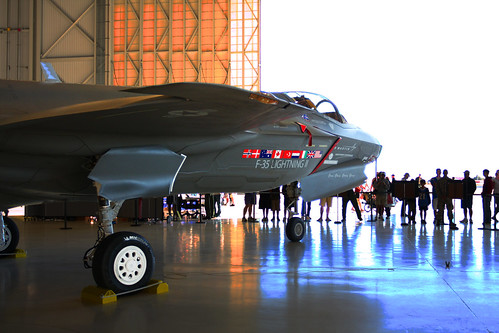Marine Corps leader orders safety stand-down of all aircraft after F-35 disappearance
F-35 #F-35

WASHINGTON — All Marine Corps aircraft, inside and outside the U.S., were grounded Monday after a stealth F-35 jet mysteriously disappeared in South Carolina, according to an order issued by Gen. Eric Smith, the acting commandant of the Marines.
Marine aircraft deployed abroad or with imminent missions can delay the order briefly but are expected to stand down for two days this week, officials said.
The Pentagon said in a statement that the pause in operations would allow units “to discuss aviation safety matters and best practices.” Marine leadership will use the stand down “to ensure the service is maintaining operational standardization of combat-ready aircraft with well-prepared pilots and crews.”
“During the safety stand down, aviation commanders will lead discussions with their Marines focusing on the fundamentals of safe flight operations, ground safety, maintenance and flight procedures, and maintaining combat readiness,” the statement said.
The Marines and Joint Base Charleston, an air base in North Charleston, South Carolina, were working Sunday to locate an F-35B Lightning II jet — with a price tag of about $80 million — after the pilot safely ejected from the aircraft. He was in stable condition Monday at a medical center, a spokesperson for the air base said.
Officials said Monday evening that a debris field had been located about two and a half hours northeast of the base.
Two defense officials said Monday that although the jet was on autopilot when the pilot ejected, it does not have the range or ability to fly for such a long period without refueling.
It remained unclear what caused the pilot to eject.
Retired Air Force Gen. Philip Breedlove, a former NATO supreme allied commander and F-16 pilot, said the military maintains a “very structured approach to an accident investigation.” He noted that a stand-down is not unusual after such an incident.
The Marines will likely create an investigatory body to immediately start gathering evidence and a longer-term group of aircraft investigators will tackle the larger scope of human, operational and maintenance factors, he said.
“Once they interview the pilot, we’ll pretty much know everything,” said Breedlove, who is a trained aircraft investigator. “Since he lived, there’s no use in the conjecture piece of this. They’ll know exactly what happened very quickly, and I would caution everybody wait rather than get speculating.”
Breedlove emphasized that the F-35 has a “phenomenal” safety record.
The decision to stand-down all aircraft also comes after two deadly Marine Corps crashes last month. An F-18 pilot died during a training flight near San Diego, and three Marines died and more were wounded when an Osprey crashed off the coast of Australia. The Pentagon noted the two previous accidents in its statement Monday.
Marines with VMFAT-501 and VMGR-252 conduct a FARP (Lance Cpl. Lauren Salmon / U.S. Marine Corps)
Joint Base Charleston said in a statement that it was coordinating its search efforts with the Marines and the Navy. It was also working with the FAA, Civil Air Patrol and local law enforcement across South Carolina, using “both ground and air assets” to aid in the search.
The jet belongs to one of the training squadrons in the 2nd Marine Aircraft Wing, the major East Coast aviation unit of the U.S. Marine Corps.
“The search-and-recovery efforts for the aircraft are ongoing, and we are thankful to the agencies assisting in this effort,” Capt. Joe Leitner, the spokesperson for the 2nd Marine Aircraft Wing, said. “The mishap is currently under investigation.”
It remains unclear why the Marines and federal authorities have been unable to track the aircraft, which carries some of the most elite technology and software procured by the federal government. That has rankled some members of Congress who have criticized the cost of the F-35 Lighting II Joint Strike Fighter program, the Pentagon’s most expensive weapon system program to date.
“I think the problem with tracking it is it’s stealthy — it’s supposed to be invisible,” said Mark Cancian, a retired Marine colonel and senior adviser at the Center for Strategic and International Studies, a national security think tank. “If some civilian airport were tracking it, that would be a problem.”
Cancian noted, however, that the F-35 has been “a very controversial program” because of its cost.
Rep. Adam Smith, D-Wash., likened the program to a financial “rathole” in 2021 during a virtual event at the Brookings Institution. His office declined to comment Monday.
“What does the F-35 give us?” asked Smith, who was then serving as chairman of the House Armed Services. “Is there a way to cut our losses? Is there a way to not keep spending so much money for such a low capability? Because the sustainment costs are brutal.”
The Department of Defense expects to spend $1.7 trillion to buy, operate and sustain the aircraft and its systems over its lifetime, according to a Government Accountability Office report published in May. The program’s procurement costs have also increased by $13.4 billion since the last estimate was made in 2019.
Kube and Gains reported from Washington, and McCausland from New York City.
This article was originally published on NBCNews.com